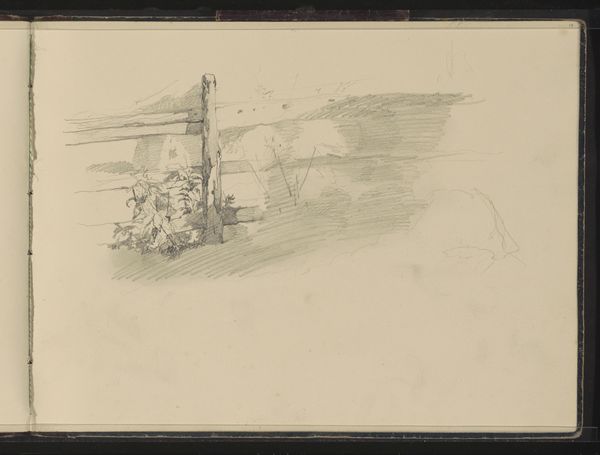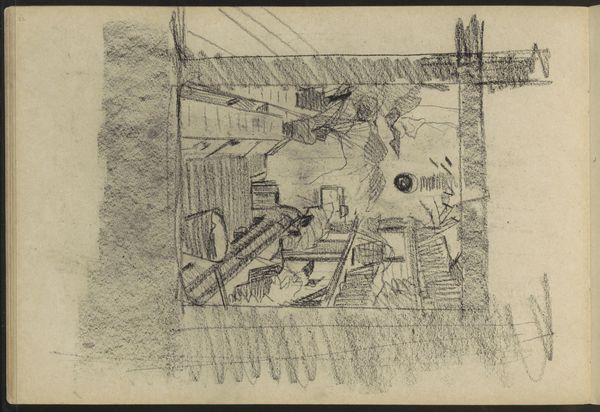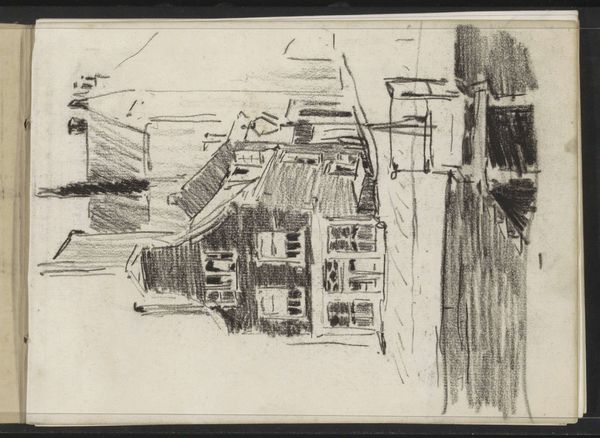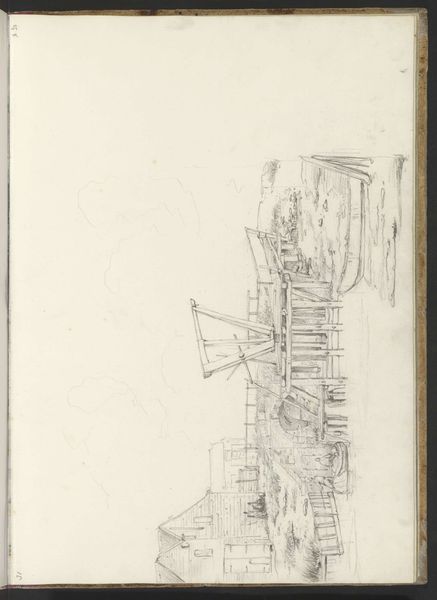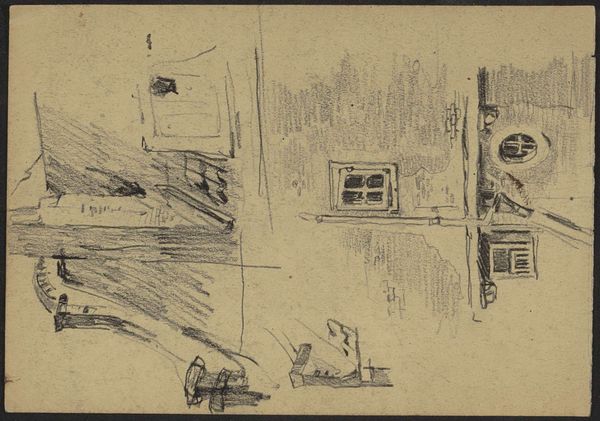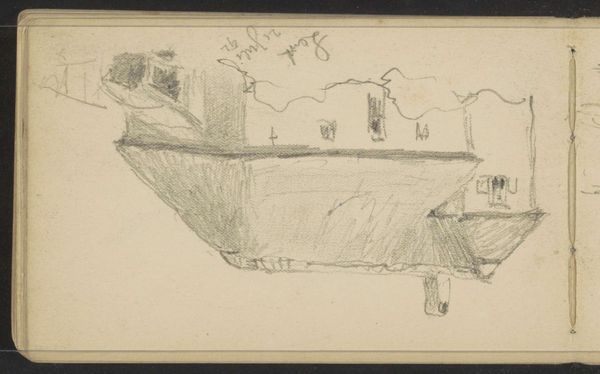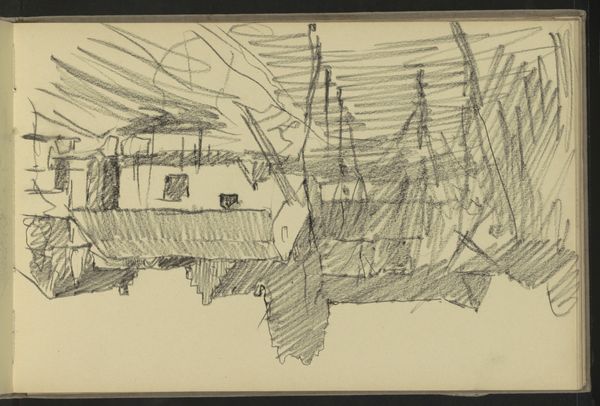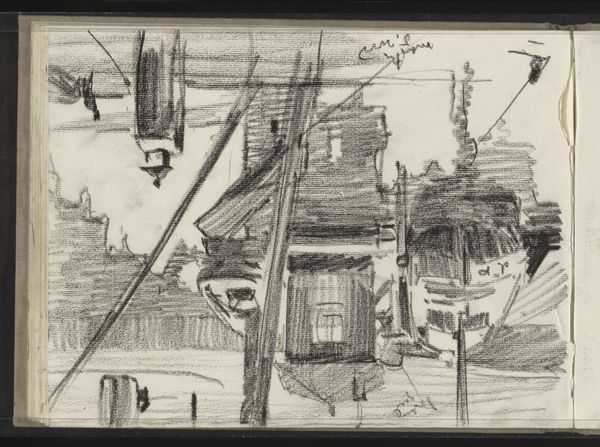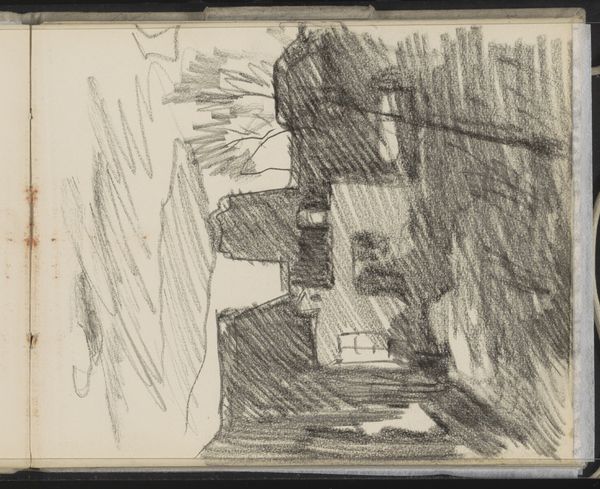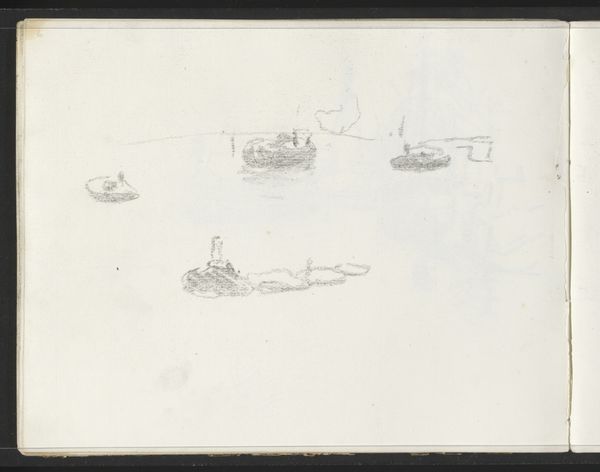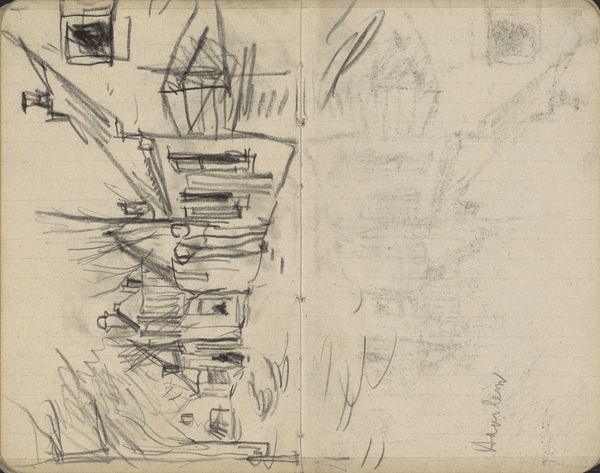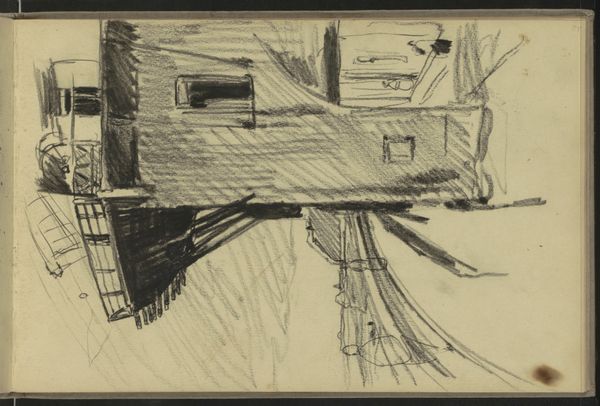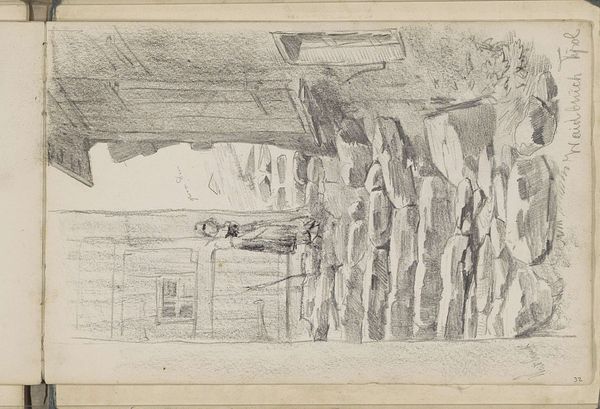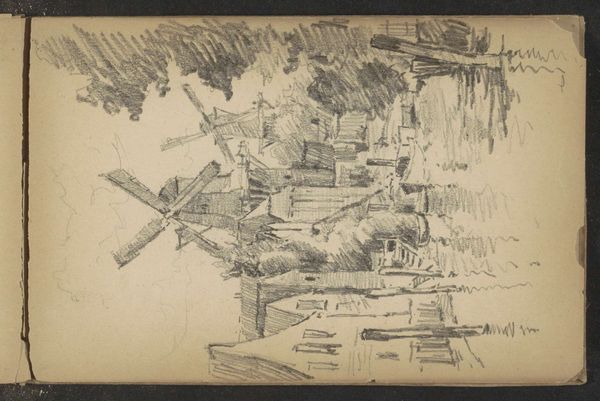
Copyright: Rijks Museum: Open Domain
Curator: Welcome. We are standing before Willem Witsen's "Bridge at a Warehouse in Uilenburg," likely created between 1910 and 1913. It’s currently held at the Rijksmuseum and rendered in pencil and watercolor on paper. Editor: My first impression is one of quiet, industrial melancholy. The composition feels deliberately off-kilter, all stark verticals and muted tones, doesn’t it? Curator: Precisely. Note how Witsen's composition directs our eye upward via those insistent lines; we're almost forced to acknowledge the geometric rigor governing the placement of each structure and shape within this somewhat austere picture. Editor: I'm intrigued by the architectural motif, but the sketch's mood carries weight, resonating with symbols of transience and industrial power. The warehouse bridge conjures images of trade, labor, and the river's historical importance, yet presented with this palpable air of melancholy. It asks you what stories and memories does it keep locked away? Curator: An interesting interpretation. I wonder, however, if assigning definite emotional valences is correct here, versus seeing how formal relationships operate to construct an internal sense. We have an opposition between those stark verticals, for instance, but how do these shapes communicate or interrupt each other as an abstract entity? Editor: A compelling counterpoint. What about the human presence, suggested but absent? We feel traces of life around this rigid frame of industry. Wouldn’t that tension of the scene enhance its cultural importance beyond abstraction alone? Curator: I cannot deny it possesses its aura! This tension is embedded between objecthood and experience itself, however one wants to read that dichotomy; Witsen makes them collide quite efficiently using so few graphical signs. Editor: Overall, considering Witsen's choices, he creates an image far exceeding a basic visual study of place, and presents us a deeper and more complicated story concerning how environments themselves take part in meaning. Curator: Indeed. By dissecting both structure and cultural context, one gains fuller appreciation for works that occupy, influence, and preserve memory in image form. Editor: Right, this artwork, when seen together, reminds you of just that intersectionality, that complex exchange between space and feeling in the annals of collective imagination itself.
Comments
No comments
Be the first to comment and join the conversation on the ultimate creative platform.
